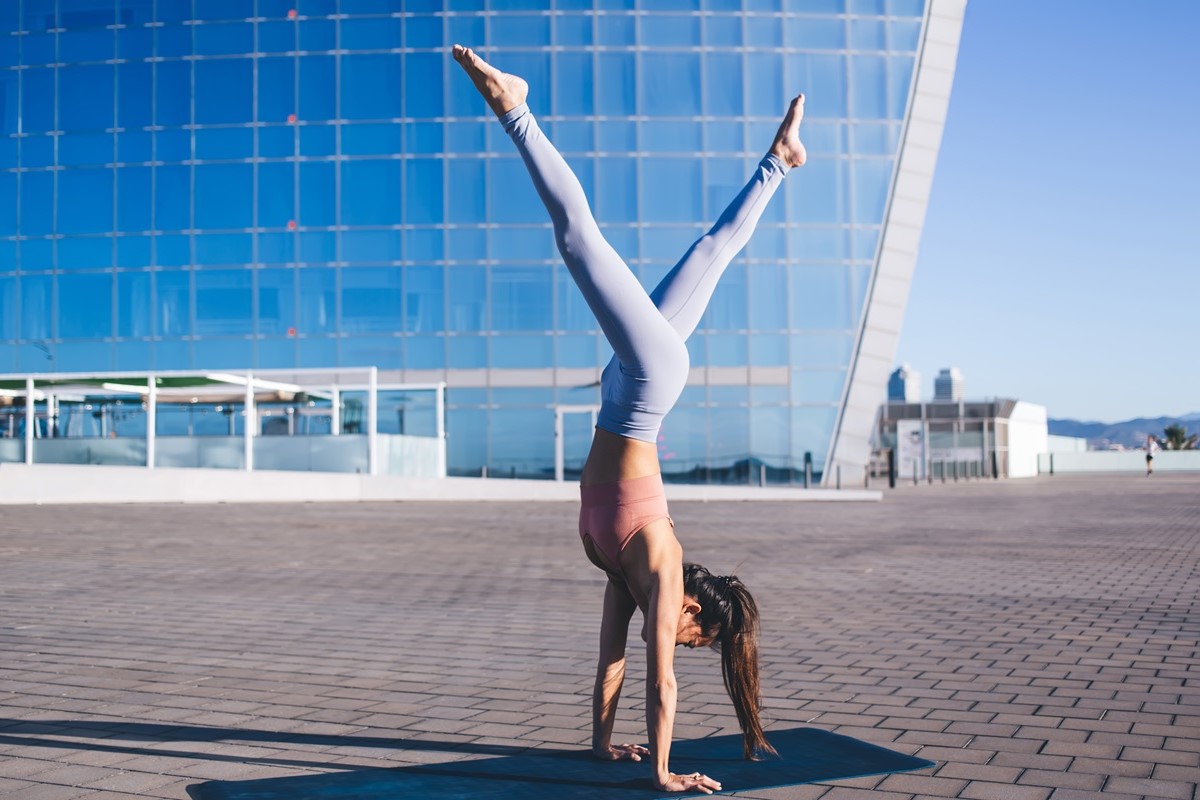Welcome to your ultimate guide to Defined Physical Fitness, where we dive deep into the world of physical well-being. This isn’t just about looking good; it’s about feeling fantastic, being strong and living your best life. Whether you’re a fitness enthusiast or just starting, this guide will provide you with all the tools you need to achieve your goals.
The pillars of physical fitness – Defined physical fitness

Strength: The foundation of fitness
Strength training is the cornerstone of a robust fitness regimen. It’s not merely about hoisting hefty weights; it’s fundamentally about enhancing the functionality of your body in day-to-day activities. Regular weight training does wonders: it builds and tones muscles, bolsters your metabolic rate, enriches bone density and elevates your general health and wellbeing.
In-depth tip: Kickstart your strength journey with compound exercises like squats, deadlifts and bench presses. These movements engage multiple muscle groups simultaneously, offering a comprehensive workout. As you progress, include isolation exercises to target specific muscle groups for more defined results.
Advanced consideration: Don’t overlook the importance of rest and recovery. Muscles need time to repair and grow stronger, so ensure you’re not overtraining a particular muscle group.
Endurance: The stamina to keep going

Endurance training is pivotal in amplifying your cardiovascular health. It empowers you to undertake and sustain physical activities over prolonged periods. This type of training is crucial not just for athletes but for anyone looking to improve their heart health and stamina.
Key activities: Endurance can be built through a variety of activities, including running, swimming and cycling. Each of these disciplines offers unique benefits – running is excellent for bone density, swimming is kind to your joints and cycling is superb for building lower body strength.
Success story: Consider the inspiring journey of Emily. She once found climbing a single flight of stairs a challenge. Through her unwavering commitment to endurance training, Emily transformed her life, culminating in completing her first marathon. This remarkable achievement underscores the power of persistence and the transformative impact of endurance training.
Flexibility: The art of movement
Flexibility, though often neglected, is a crucial element of a well-rounded fitness routine. Having a good range of motion in your joints enhances performance in other fitness areas, reduces the risk of injuries, improves your posture and can even alleviate stress and tension in your body.
Practical tip: To boost your flexibility, incorporate a variety of stretching exercises into your routine. This could include dynamic stretches as part of your warm-up or static stretching post-workout to aid in recovery. Yoga is also an excellent way to enhance flexibility, offering the added benefits of mindfulness and stress reduction.
Advanced strategy: Consider incorporating activities like Pilates or dance, which focus on both strength and flexibility, offering a holistic approach to your physical fitness.
In summary, embracing these pillars of Defined Physical Fitness – strength, endurance and flexibility – will not only bolster your physical capabilities but also enhance your overall quality of life. Each component plays a vital role in developing a balanced, healthy and resilient body. Remember, the journey to peak fitness is continuous and evolving, so keep challenging yourself and pushing your boundaries.
Diving into specific fitness activities – Defined physical fitness

Swimming: A whole-body workout
Swimming is a superb way to achieve Defined Physical Fitness. Its allure lies in its low-impact nature, making it an ideal exercise for people of all ages and fitness levels. When you swim, you engage almost every muscle group in your body, making it an incredibly efficient form of exercise.
Extended tip: Vary your swimming routine by trying different strokes, such as breaststroke, backstroke, butterfly and freestyle. Each stroke targets different muscle groups and presents unique challenges, enhancing your overall fitness.
Additional benefit: Swimming also improves cardiovascular health and is known for its calming, meditative effects on the mind, offering a holistic approach to wellness.
Running: The path to endurance
Running is one of the most effective ways to build endurance and improve cardiovascular health. It’s incredibly accessible – all you need is a pair of running shoes and you’re ready to go. Running regularly can lead to significant improvements in heart health, lung capacity and calorie burning.
Extended success story: Consider John’s transformational journey. Initially, he struggled with basic physical activities. Through consistent running, he not only improved his physical health but also developed mental resilience. Today, John participates in half-marathons, a feat that seemed impossible to him once.
Advanced tip: To prevent running injuries, invest in good-quality running shoes, vary your running surfaces and incorporate strength training to support your running performance.
Cycling: Pedal your way to fitness

Cycling is an excellent activity for building leg strength, enhancing lung capacity and improving overall fitness without putting too much strain on your joints. Whether you prefer road biking, mountain biking or casual rides around the park, cycling offers diverse experiences suited to all fitness levels.
Motivational tip: Joining a cycling club or participating in events like charity rides or sportives can provide a sense of community and keep your motivation high.
Additional insight: Cycling is not only beneficial for physical health but also for mental well-being, as it allows you to explore new environments and enjoy the sense of freedom that comes with it.
Weight training: Build strength and confidence
Weight training is an essential component of Defined Physical Fitness. It’s not solely for those aspiring to become bodybuilders but is crucial for anyone looking to enhance muscle tone, improve bone density and boost metabolism.
Focused tip: When starting with weight training, it’s vital to focus on form over the amount of weight lifted. Proper technique is key to preventing injuries and maximizing the effectiveness of your workouts.
Broadening perspective: Incorporate different types of resistance training, such as bodyweight exercises, free weights and machines, to provide variety in your routine and challenge your muscles in new ways.
Each of these activities offers unique benefits and contributes to a comprehensive approach to physical fitness. By engaging in a variety of these exercises, you can create a balanced and effective fitness regimen that not only enhances your physical health but also boosts your mental well-being, leading to a more fulfilling and healthy lifestyle. Remember, the key to success in any fitness endeavour is consistency and a willingness to step out of your comfort zone. Embrace these activities as part of your journey towards Defined Physical Fitness and enjoy the myriad of benefits they bring.
Nutrition: Fueling your fitness journey – Defined physical fitness

A well-balanced diet is the cornerstone of achieving Defined Physical Fitness. It’s essential to consume a harmonious mix of macronutrients—proteins, carbohydrates and fats—alongside a variety of micronutrients to adequately fuel your fitness endeavours.
Extended tip: Ensure you’re drinking plenty of water to stay hydrated, particularly during and after workouts. If you find your diet lacking in specific nutrients, consider integrating supplements, but always opt for natural food sources first.
Further insight: Don’t forget about the timing of your meals. Eating the right foods at the right time can significantly enhance your performance and recovery. For instance, consuming protein after a workout aids muscle repair, while carbohydrates before exercise can provide energy.
Confronting fitness misconceptions

Myth: Lifting weights makes you bulky
Many assume that weight training inevitably leads to a bulky physique. However, the truth is far different. When paired with a balanced diet, weight training helps in toning and strengthening your body without necessarily increasing bulk. It’s about building lean muscle mass and enhancing overall body composition.
Myth: You can out-exercise a bad diet
This is a common misconception. The reality is that nutrition and exercise are intertwined. You cannot simply exercise away poor nutritional choices. A balanced diet is crucial to support your fitness regimen and achieve optimal results.
Setting realistic fitness goals for defined physical fitness

Embarking on a fitness journey requires setting achievable goals. Start with modest aims and gradually escalate the intensity and duration of your workouts. Celebrate every success, no matter how minor, as each step forward is a victory in its own right.
Success story: Take inspiration from Anna, who set a manageable goal of swimming twice a week. Through consistent effort, she improved dramatically and now competes in local swimming competitions, showcasing the power of setting and pursuing realistic goals.
Embracing technology: Fitness apps and wearables
In this digital age, fitness apps and wearable technology can be invaluable allies in your journey to Defined Physical Fitness. These tools offer a multitude of functions: from tracking your daily activity, monitoring your heart rate, to providing a detailed analysis of your workouts.
Utilisation tip: Leverage these apps to monitor your dietary intake, set exercise goals and keep tabs on your overall progress. Many apps also offer community support, allowing you to connect with like-minded individuals for motivation and advice.
Incorporating a balanced diet, addressing fitness misconceptions, setting realistic goals and harnessing the power of technology are all integral components of a successful fitness journey. By focusing on these areas, you’ll be well-equipped to achieve and maintain Defined Physical Fitness, leading to a healthier, more energised and fulfilling lifestyle.
Conclusion for defined physical fitness
Defined physical fitness is about more than just physical appearance; it’s about building a healthier, happier you. Remember, the journey is personal and unique to each individual. Embrace your journey, stay consistent and watch as you transform into the best version of yourself.
Remember, fitness is a journey, not a destination. Start your journey to Defined Physical Fitness today and embrace a healthier, more vibrant life.
